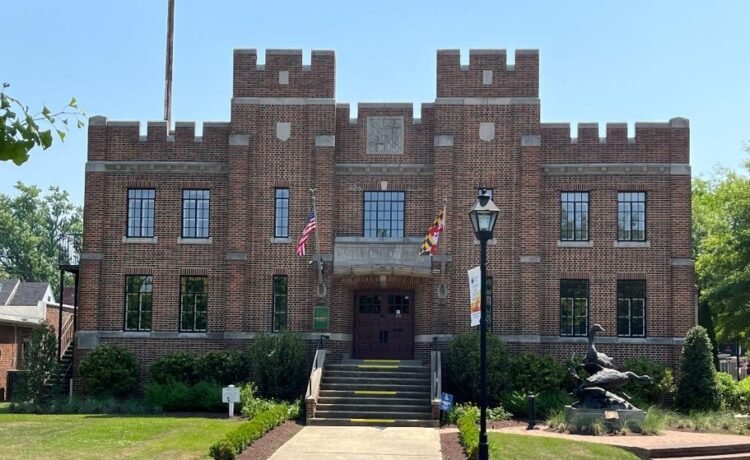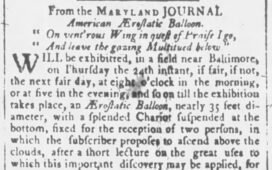The Maryland Historical Trust is pleased to announce the nine Historic Preservation Capital Grant Program grant awards totaling $699,000 to Maryland organizations for FY25!
The Historic Preservation Capital Grant Program provides support to organizations and private citizens for preservation-related acquisition and construction projects as well as for architectural, engineering, archaeology, and consulting services needed in the development of construction projects. For FY25, the Historic Preservation Capital Grant program received 55 applications requesting over $4 million in funding. This year’s grant awards range from $40,000 to $100,000. The awardees are listed below, in alphabetical order by county.
Gordon Roberts House – Cumberland, Allegany County, ($86,000) | Sponsor: Allegany Historical Society
Also known as History House, the Gordon Roberts House is the current home of the Allegany County Historical Society. Originally constructed in 1867, the building is one of the few examples of the Second Empire-style in Cumberland. The 2 1/2-story, brick clad house displays a prominent mansard slate roof with pedimented dormers, and decorative brackets at the porch posts. The house was constructed for Josiah Gordon, a Maryland State Senator who later became the president of the Chesapeake and Ohio Canal Company. The property was deeded to the Allegany County Historical Society in 1957, and the group uses the site as both offices, a location for various events, and interpretation of the history of Allegany County. Grant funding would support the replacement of the exterior porch decking, restoration of the remainder of the porch, gutter and rotten soffit repairs, and repairs to interior ceiling plaster.
First and Franklin Presbyterian Church – Baltimore City ($100,000) | Sponsor: Committee of the Presbyterian Church in the City of Baltimore
Listed in the National Register, First and Franklin Presbyterian Church was jointly designed by notable English-born architect Nathan Starkweather and his protégé, E.G. Lind, and was constructed between 1854 and 1859. The church is the home of the original congregation of the Presbyterians in Baltimore and was comprised of several prominent Baltimore families, including the Stricker, McHenry, Patterson, and Poe families. The highly ornate church is one of the finest and most recognizable examples of Gothic Revival architecture in Baltimore. The church and congregation have also played a significant role in LGBTQ+ history. The first AIDS Support Group outside of a clinical environment was held at the church on April 27, 1983, and on June 8, 1983, the church hosted the first public forum on the burgeoning AIDS crisis, which drew more than 300 people. The requested funds will address failing brownstone elements that pose a hazard to pedestrians.
Hays House – Bel Air, Harford County, ($41,000) | Sponsor: Historical Society of Harford County
The Hays House was constructed ca.1788, with a two-story addition in 1814, and has been little altered since. However, in 1960, it was moved one block from its original site. It is the oldest private residence located within the Town of Bel Air, and the original owner, Thomas A. Hays, was the cartographer of the earliest known map of the town. It has been the headquarters of the Historical Society of Harford County since the 1960s and is currently used as a museum. The grant project would focus on the urgent repairs to siding at the west and south walls, where water damage has caused severe rot issues; repair of exterior stairs and railing that poses a safety issue; window and door trim repairs, and repairs to the chimney.
Howard County Courthouse – Ellicott City, Howard County ($100,000) | Sponsor: Howard County, Maryland
The Howard County Courthouse is a two-story, granite ashlar stone building that displays elements of the Greek revival style, including Doric pilasters, a granite frieze, and raking cornice on the pediment. The most prominent feature of the courthouse is the octagonal lantern with a gold-painted roof. The courthouse was constructed in 1843. Subsequent additions have enlarged the building, and all newer portions are granite, matching the original materials of the building. The courthouse was the site of several important trials associated with the Underground Railroad, including the transfer of abolitionist William L. Chaplin to Howard County and various trials of free blacks that enticed others to escape bondage. Grant funding would be used to aid a complete exterior restoration of the building, including repairs to masonry, windows, doors, shutters and various metal elements.
Kent News Building – Chestertown, Kent County, ($74,000) | Sponsor: Sultana Education Foundation
Originally constructed in 1859 for the Methodist Protestant Church, the Kent News Building is a simple, brick-clad, gabled, two-story structure that displays elements of the early Classical Revival style. The church retained its use until 1888, when the congregation relocated to a larger building, and the County School system reoccupied the structure. By 1904, the County had sold the building to Charles Smith and L. Bates Russell, and the first floor housed the Enterprise Newspaper, while the second floor was a very early film theater. The paper remained at the site until 1943, and it was later sold to the Kent Publishing Company. The Kent County Newspaper was housed in the building until it was conveyed to the Sultana Education Foundation in 2013. A previous repointing of the exterior used Portland cement, which is wholly incompatible with the softer historic brick. As a result, the brick has begun to spall and fail. Grant funding would be used to remove the Portland cement, repair and replace the historic brick with appropriate materials, and repoint the façade with lime-based mortar.
Tudor Hall – Leonardtown, St. Mary’s County, ($75,000) | Sponsor: St. Mary’s County Historical Society
Tudor Hall is a c.1785 Georgian style estate home that was constructed for Abraham Barnes, a prominent tobacco merchant. His son Richard, also a resident of the house, was a Revolutionary War officer, ratified the Constitution, and served on the convention that sent delegates from Maryland to the Continental Congress. He also orchestrated a mass mobilization of troops from Maryland to Virginia during the Yorktown Campaign. After several ownership changes, the home was sold to Philip Key, an uncle to Francis Scott Key, and it remained in the Key family until 1917, when it was vacated for almost 30 years. By the 1980s, the building had been used as both a residential rental and a library before being transferred to the St. Mary’s County Historical Society in 1984, who uses it as their headquarters today. Grant funding would be used to support pre-development activities, including an assessment of the building’s overall condition, a rehabilitation plan that would note required treatments and prioritization, and cost estimates for the work.
Easton Railroad Station – Easton, Talbot County ($40,000) | Sponsor: Town of Easton
The Easton Railroad Station, originally known as the Penn-Central Station, is a one-story, hipped-roof, brick and cedar shingle-clad building with heavy knee braces supporting widely flaring eaves. Constructed in 1920, the station played a vital role in commerce, travel, and community connection until the decline of the passenger rail service in the mid-1900s. After being used as a farmer’s market and tourist excursion location, the building suffered a fire and was subsequently purchased by the Town of Easton in 1990. The town restored the structure, and it is now used as a satellite office for city staff. The building is also a fixture along the popular Rails to Trails path and is a contributing resource to the NR-listed Easton Historic District. Grant funding would be used to remove the older shingles, repair any damage to the sheathing and underlying structural members, relay new cedar shingles, add copper flashing, and repair or replace damaged gutters.
Teackle Tenement – Princess Anne, Somerset County ($100,000) | Sponsor: Somerset County Historical Trust
This two-story, ca. 1810 frame structure is one of two tenement dwellings that served as servants’ quarters situated at the original gates of the Teackle Mansion in Princess Anne. Littleton Dennis Teackle, the proprietor of the estate known as “Teackletonia,” actually moved into the house with five of his servants after experiencing severe economic hardships in 1848. Although constructed of a different material, the design of the original portion of the home references the larger mansion in its hall and parlor form and prominent pedimented front gable. Recent restoration efforts have removed inappropriate features added in the mid-20th century. Once restoration of the property is complete, it will become the home of the Somerset County Historical Society and will interpret the lives of the artisans, craftsmen, and servants who were associated with this important estate. Grant funding would be used to repair the foundation, replace the cedar shingled roof, and address any structural framing repairs.
Easton Armory – Easton, Talbot County ($83,000) | Sponsor: Waterfowl Chesapeake
Constructed in 1927, the Easton Armory, like many National Guard Armories of the 1920s and 1930s, was designed to mimic a fortress and displays Medieval Revival-inspired elements. The two-story, brick-clad, symmetrical building exhibits two engaged and projecting squared towers that flank the central doorway and a cast stone cornice that separates the wall from the battlements above. The building served as an armory until 1976, when it was deeded to the Department of Natural Resources in 1976 for use as their police headquarters. In 1997, the town took ownership of the building and transferred stewardship of the armory to the Chesapeake Waterfowl Festival, an annual celebration that draws more than 15,000 attendees each year. The space is also available for local nonprofits and other organizations to use for various events. Although an exterior rehabilitation of the building that included repointing and window repairs, and replacements was completed in 2024, the barrel roof remained unrepaired. Grant funding would support the removal of the older roofing layers, repair of any damaged decking or structural elements, installation of a new roof and metal coping, and new gutters and downspouts.
For more information about the Historic Preservation Capital Grant Program, please contact Bill Hersch, Capital Grants and Loans Administrator, at Bill.Hersch@maryland.gov.
Discover more from Our History, Our Heritage
Subscribe to get the latest posts sent to your email.
























